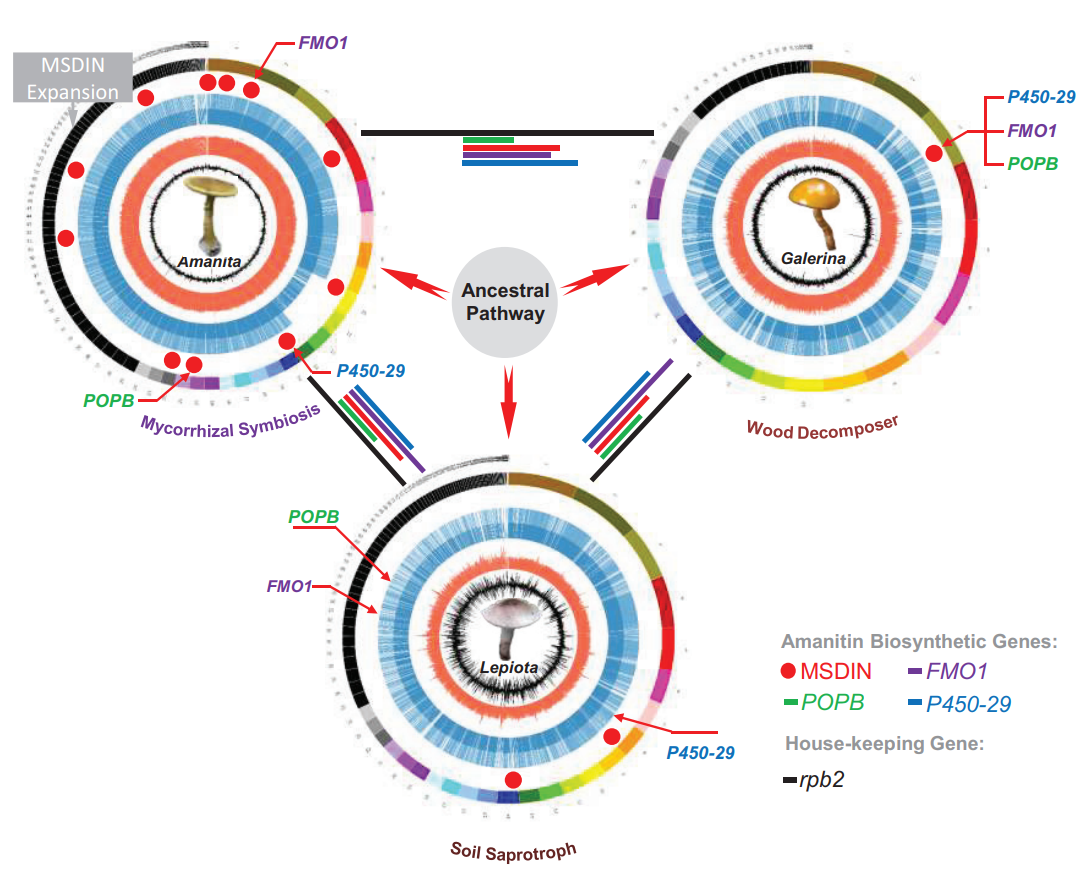Poisonous mushrooms are a major threat to human health, yet contribute to important drug and biomolecule developments. Among them, Amanita mushrooms are without doubt the deadliest known to mankind. However, distantly related mushrooms, such as Galerina and Lepiota produce the same deadly cyclic peptide toxin, α-amanitin.
Through genetic analysis, researchers from the Kunming Institute of Botany of the Chinese Academy of Sciences (KIB/CAS) have identified two new genes responsible for the toxin biosynthesis and discovered that these mushrooms use variations of a similar pathway for the toxin production.
According to the researchers, with independent evolutionary trajectories, three mushroom genera, Amanita, Galerina and Lepiota, tailored their abilities of toxin production to their own needs.
Specifically, Amanita makes significant innovations to produce hundreds to thousands of cyclic peptide toxins by harnessing a large number of precursor genes (MSDINs) and posttranslational genes including cytochromes P450 (P450s). In stark contrast, Galerina possesses only one precursor gene encoding α-amanitin. Lepiota is somewhere in between, produces around ten precursor genes.
The genetic basis for Amanita to manufacture an arsenal of known and unknown toxins is the underlining mechanism for Amanita to assume the deadliest mushrooms, causing over 90% of all lethal poisoning cases.
How did these different mushrooms obtain the same pathway? The researchers found that horizontal gene transfer (HGT) is the underlining mechanism, with which various mushrooms obtained the ability to produce the toxin instantly. In addition, HGT did not occur among these three genera, but probably through another unknown ancestral mushroom(s).
For the first time, how distantly related lethal mushrooms make the same toxin is unveiled. The genetic basis discovered in this study provides possibilities to harness the ability and invent novel cyclic peptides for the wellbeing of mankind.
This study entitled "Genes and evolutionary fates of the amanitin biosynthesis pathway in poisonous mushrooms" was published on PNAS as a full research article in Genetics section.









